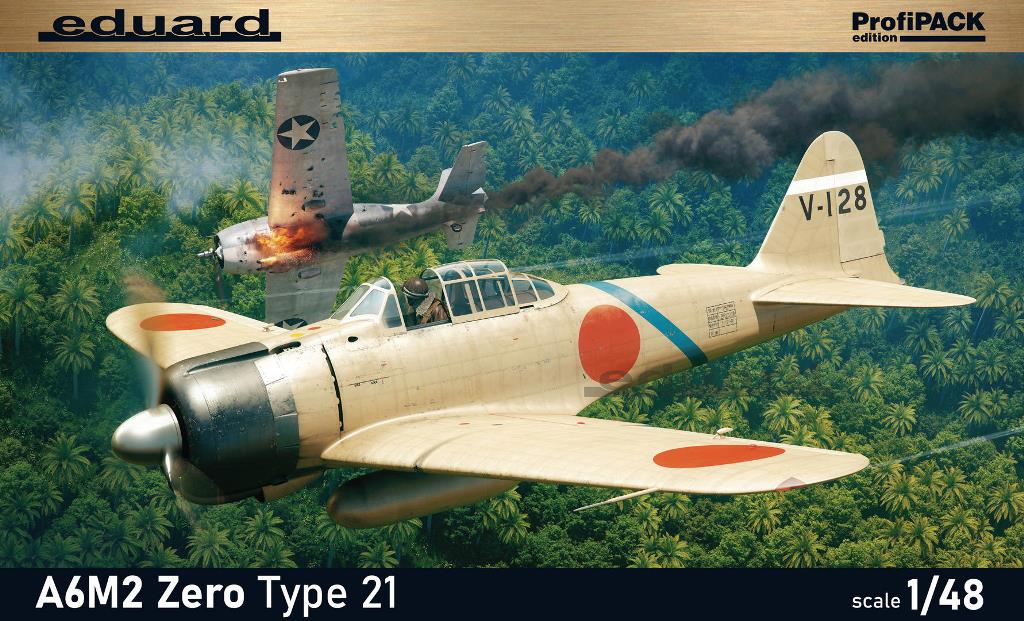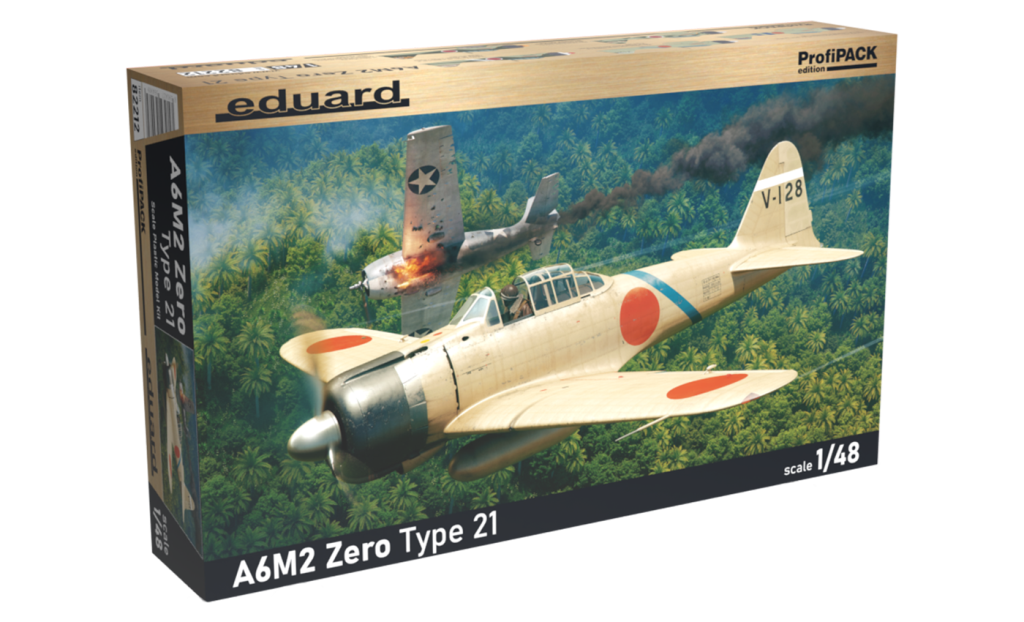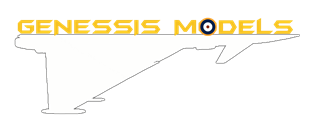Genessis Models News
Keep up-to-date with everything Genessis
IN BOX REVIEW : A6M2 ZERO TYPE 21 : EDUARD : 1/48 SCALE MODEL

A6M2 ZERO TYPE 21 REVIEW

- Manufacturer: Eduard
- Scale: 1/48
- Box Release Date: 2022
- New Tool Date: 2021
- Presented By: Bobby Waldron
- Marking options: 5
- Model Dimension: Length: ?? Wingspan: ?? Height: ??
- Decals: Eduard
- PE parts: Yes
- Painting Mask: Yes
- Resin Parts: No
- Item No: 82212
ProfiPACK edition kit of Japanese WWII naval fighter plane A6M2 Zero Type 21 in 1/48 scale.
The Mitsubishi A6M “Zero” is a long-range carrier-based fighter aircraft formerly manufactured by Mitsubishi Aircraft Company, a part of Mitsubishi Heavy Industries, and was operated by the Imperial Japanese Navy from 1940 to 1945. The A6M was designated as the Mitsubishi Navy Type 0 carrier fighter (零式艦上戦闘機, rei-shiki-kanjō-sentōki), or the Mitsubishi A6M Rei-sen. The A6M was usually referred to by its pilots as the Reisen (零戦, zero fighter), “0” being the last digit of the imperial year 2600 (1940) when it entered service with the Imperial Navy. The official Allied reporting name was “Zeke”, although the name “Zero” (from Type 0) was used colloquially by the Allies as well.
The Zero is considered to have been the most capable carrier-based fighter in the world when it was introduced early in World War II, combining excellent maneuverability and very long range. The Imperial Japanese Navy Air Service (IJNAS) also frequently used it as a land-based fighter.
In early combat operations, the Zero gained a reputation as a dogfighter, achieving an outstanding kill ratio of 12 to 1, but by mid-1942 a combination of new tactics and the introduction of better equipment enabled Allied pilots to engage the Zero on generally equal terms. By 1943, the Zero was less effective against newer Allied fighters due to design limitations. It lacked hydraulic boosting for its ailerons and rudder, rendering it extremely difficult to maneuver at high speeds. By 1944, with Allied fighters approaching the A6M levels of maneuverability and consistently exceeding its firepower, armor, and speed, the A6M had largely become outdated as a fighter aircraft. However, as design delays and production difficulties hampered the introduction of newer Japanese aircraft models, the Zero continued to serve in a front-line role until the end of the war in the Pacific. During the final phases, it was also adapted for use in kamikaze operations. Japan produced more Zeros than any other model of combat aircraft during the war.
Find Products In Store
-
 Fighter Ace Monthly£8.99 / month
Fighter Ace Monthly£8.99 / month -
 Fighter Ace Yearly£89.00 / year
Fighter Ace Yearly£89.00 / year -
 Fighter Pilot Monthly£5.50 / month
Fighter Pilot Monthly£5.50 / month -
 Fighter Pilot Yearly£55.00 / year
Fighter Pilot Yearly£55.00 / year
